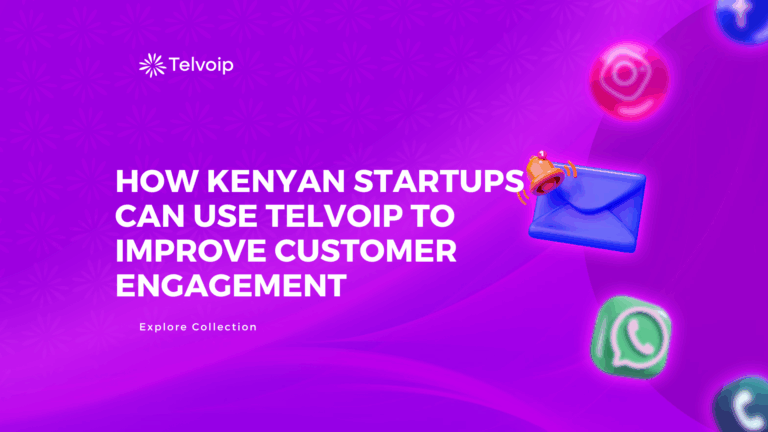Table of Contents
Toggle
The Evolution of Toll-Free From Call Centers to Data Centers
For decades, toll-free numbers were synonymous with accessibility. Customers dialed 800-numbers for help, while businesses tracked call volumes and durations to see how much traffic came in, and not why. But the digital age changed expectations, and customers now demand instant, personalized service, whether through phone, chat, or email. Legacy toll-free setups couldn’t keep up; then came cloud telephony and AI integration, ushering in a new era. What used to be a reactive service line has evolved into a proactive feedback engine. Modern toll-free systems integrate directly with unified communication channels and customer relationship management (CRM) tools, pulling data into dashboards that reveal call intent, sentiment, and conversion potential. The toll-free number has now evolved from a support line, into a listening post for business intelligence.
The Data Goldmine in Every Call
Every call holds more value than meets the ear. Advanced toll-free systems now collect granular analytics that uncover customer patterns and emotions in real time. Here’s what smart call analytics can reveal:- Demographics and geography: Who’s calling, from where, and when.
- Call intent: The reason behind the call, from product inquiries to complaints.
- Sentiment and tone: AI-powered tools can detect frustration, satisfaction, or confusion in a caller’s voice.
- Trends and frequency: How call types shift over time, signaling service gaps or new opportunities.

Turning Insights into Instant Action with Automation
Data without action is just noise, and that’s where contact center automation steps in, turning insights into outcomes. Modern toll-free platforms use automation to streamline everything from call routing to follow-ups. Interactive Voice Response (IVR) systems are no longer limited to “press 1 for sales.” AI-driven IVRs can interpret intent through natural language; recognizing phrases like “I want to check my delivery” or “I lost my card” and routing calls intelligently. Automation can also handle post-call tasks:- Automatic transcription and tagging for CRM updates.
- Trigger-based responses, like sending a feedback SMS after a resolved issue.
- Prioritization rules, ensuring high-value customers reach agents faster.

Smarter Routing, Happier Customers
Routing is where analytics and automation truly meet when managing customer handling time. Intelligent call routing uses real-time data such as caller history, location, language preference, or even sentiment to connect customers with the best-suited agent or department. Instead of random distribution, calls are intelligently directed based on context. A long-time customer might be routed to a senior representative, while a new lead from a marketing campaign might go straight to sales. Businesses adopting AI-driven routing have seen up to 30% improvements in first-call resolution, leading to higher satisfaction and retention. An e-commerce brand, for example, can automatically route high-spend customers to loyalty specialists who handle their issues faster and more personally. That’s more than service, it’s smart customer care.
Predictive Intelligence: Seeing Beyond the Call
Once analytics starts predicting behavior, toll-free transforms from reactive support into proactive engagement. Predictive models built on call data can forecast call volumes, anticipate pain points, and even flag customers likely to churn. Voice sentiment analysis, powered by machine learning, can detect emotion shifts that signal dissatisfaction before it becomes visible in surveys. This helps brands reach out early, often before the customer complains online. Take a telecom provider that tracks recurring complaints about network issues in specific regions. Predictive toll-free analytics can alert operations teams before the issue escalates, preventing service interruptions and boosting satisfaction. When brands start predicting customer intent rather than reacting to it, toll-free lines become growth enablers as the first responders of customer intelligence.
Integration with CRM, AI, and Marketing Platforms
Smart toll-free systems don’t exist in isolation; they thrive in ecosystems. Integrating telephony data with CRM, marketing, and analytics platforms creates a unified view of customer behavior. When a customer calls, the system instantly pulls their history, purchase data, and prior interactions, allowing agents to respond with precision; an integration that improves service and amplifies marketing intelligence. For instance, toll-free analytics can feed data into Google Ads or Meta campaigns. If a spike in calls follows an ad push, marketing teams can correlate ROI instantly. Companies that integrate telephony analytics with CRM systems report up to 20% higher conversion rates, according to SuperAGI data. That’s because every call becomes both a service moment and a marketing signal.
Measuring What Matters: KPIs for Smart Toll-Free Systems
The success of a modern toll-free setup can’t be measured by call volumes alone. Counting the number of incoming calls tells you how busy your lines are, but not how well your customers are being served. Businesses are moving beyond surface metrics to track quality-driven KPIs that reveal genuine customer outcomes and operational efficiency. These are the metrics defining the new era of toll-free intelligence:- First-Call Resolution (FCR): Measures how often issues are solved on the first try, a leading indicator of customer satisfaction and agent effectiveness. High FCR rates mean fewer repeat calls, faster service, and lower operational costs.
- Sentiment Score: AI-driven speech analytics can now detect tone, stress, and emotional cues to quantify customer sentiment during and after calls. This helps brands understand emotional context, something traditional surveys often miss.
- Average Handling Time (AHT): Beyond speed, AHT reflects how efficiently agents manage calls without compromising empathy or quality. With automation handling routine queries, AHT can drop without sacrificing the human touch.
- Customer Satisfaction (CSAT) and Net Promoter Score (NPS): The direct pulse of brand loyalty. Integrating post-call surveys into toll-free systems allows for immediate feedback that correlates directly with call performance and experience quality.
- Agent Utilization Rate: Balances workload and empathy. Automation and analytics ensure agents aren’t overburdened, freeing them to focus on high-value interactions that require human judgment.

Overcoming Implementation Challenges
Smart toll-free transformation doesn’t happen overnight, and it doesn’t come without friction. While the rewards of analytics and automation are clear, many organizations stumble during implementation. The reasons range from technical limitations to organizational resistance and data governance challenges. Some of the most common roadblocks include:- Data Silos: In many organizations, customer data lives in separate systems such as the call center, CRM, and marketing platforms rarely communicate within themselves. This fragmentation prevents a unified view of the customer journey and limits the value of toll-free analytics.
- Legacy Infrastructure: Older telephony systems often lack API compatibility or cloud readiness, making it difficult to integrate AI-driven tools and automation features without major upgrades.
- Regulatory Compliance: Data privacy laws such as GDPR, and local telecommunication standards require strict control over how call recordings and personal data are stored, analyzed, and shared. For global businesses, compliance can quickly become complex.
- Start with a Phased Rollout: Focus on automating one process at a time, such as call routing or post-call transcription, to build internal confidence and measure ROI early.
- Invest in Training: Equip teams with the knowledge to interpret analytics, read dashboards, and apply insights. Technology without understanding is just noise.
- Choose Scalable Vendors: Opt for cloud-native, API-driven solutions that easily integrate with your existing CRM and business tools, ensuring future compatibility.
- Prioritize Data Governance: Create clear internal policies around access control, encryption, and retention. Data security is the backbone of trust and should never be treated as an afterthought.
Transforming Toll-Free from Reactive to Predictive Service
The next evolution of toll-free lies at the intersection of AI and empathy. As conversational AI matures, toll-free systems will be able to interpret not just words, but emotions to help adjust tone, pace, and even response scripts in real time. Voice biometrics may soon allow instant identity verification, while predictive AI will offer proactive customer support. Imagine a toll-free system that calls you before your subscription expires or detects dissatisfaction through voice patterns and alerts retention teams. This is the age of empathetic automation, where technology enhances, not replaces, human connection. According to Gartner, by 2027, over 75% of enterprises will use AI-driven voice analytics to improve customer engagement. The toll-free number will remain a constant, but what happens behind it will evolve dramatically.








